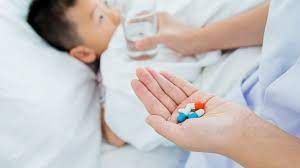What Is Ritalin Used For?
Ritalin (generic name: the chemical methylphenidate) is a stimulant used to decrease the consequences of Attention Deficit Disorder (ADD) and Attention Hyperactivity Disorder (ADHD). It can also be prescribed to treat Narcolepsy.
Street Names for Ritalin
Although Ritalin is often prescribed, it can be misused, particularly in younger users. It is typically available on the streets using the name:
- Kiddie coke.
- Diet coke.
- Poor man’s cocaine.
- Skittles.
- Smarties.
Is Ritalin Bad for You?
If taken in the manner intended and in the direction of the physician who prescribed it, Ritalin is generally considered safe. But, not all people take this stimulant according to the directions. Ground up into powder form to facilitate unintended routes of administration–including inhalation and intravenous injection–Ritalin can be absorbed into the body more speedily. When used in this manner, it is a more potent (not to mention extremely dangerous) drug with results similar to cocaine. On the scale of the potency of stimulants to the nervous system, Ritalin falls somewhere between amphetamines and caffeine. Ingestion of high doses of Ritalin or taking it through alternative methods like smoking can result in:
Cause a variety of physical and psychological consequences.
Changes in mood and Changes in mood and.
It is a quick way to develop a pattern of abuse tolerance, addiction, and abuse.
If you’ve fallen into this spiral of Buy ritalin online addiction, you can return to normal. Call American Addiction Centers (AAC) for assistance at 877-960-3001.
Or send a text message or call to talk to someone about rehab centers for addiction that specifically address your dependency on stimulants problem.
Short-Term Effects of Ritalin Use
In the beginning, as with the other stimulants, Ritalin may cause the “desired” effects:
Activity and alertness increase.
Emotions of euphoria.
Inhibits appetite.
Talkativeness.
Ritalin is commonly called a “smart drug” by users who use it for recreational purposes to enhance their performance at school. It hasn’t been proven that it is as effective for people who don’t have ADD or ADHD. As time passes, tolerance and dependence rise with continual Ritalin usage, and academic performance will decline. It’s certainly not the performance booster some people may put their bets on.
Ritalin Side Effects
The strength of Ritalin’s effects will depend on the method of taking the medication (i.e., via pill forms, intranasally, or via intravenous injection) and how much is consumed. Like any prescription medication in pill form, the effects will likely be more severe for people using Ritalin without a medical condition that warrants its usage. Some of the side effects associated with Ritalin misuse can include:
Confusion.
Agitation.
Anxiety.
Insomnia.
Paranoia.
Appetite loss.
Fatigue.
Heart rate that is not normal.
Nausea.
Headaches.
Respiratory depression.
Chest pain.
The blood pressure may be decreased or increased.
Ritalin Overdose Symptoms and Signs
Overdoses that are stimulant-related, even when they’re on Ritalin, a prescribed medication, can be fatal. If you notice any of the symptoms or indicators warning signs of Ritalin overdose in a person who you suspect may have an addiction problem or Ritalin addiction problem, contact urgent medical assistance:
Uncontrolled vomiting.
Severe hallucinations.
Dilated pupils with a markedly dilated appearance that are insensitive to light.
Extremely flushed skin and increased body temperature.
Dry nasal or mouth.
Rapid heartbeat.
Pounding chest pain and shortness of breath.
Convulsions and seizures.
Consciousness loss.
Don’t hesitate to seek assistance if you spot any of the symptoms of Buying ritalin online overdose. Learn about the steps to take during an overdose by visiting our blog, “Taking Steps to Respond during an overdose.
Long-Term Effects of Ritalin Use
The long-term effects resulting from methylphenidate usage could include:
Apathy and disorientation.
Hallucinations, hallucinations, and delusions are other symptoms of psychotic disorders.
Frequent seizure activity.
Anorexia and weight loss marked.
The alternating episodes of mania and depression.
Suicide thoughts.
In addition, Ritalin addiction can result in various changes in personal and social life that could significantly impact the quality of life for the person and the lives of his loved ones and family. The following kinds of changes occur in people who are dependent on Ritalin and other drugs:
Profound mood changes.
Financial burden due to having to pay for Ritalin continuously.
A need to get prescriptions like going to numerous doctors.
Refrain from friends and family.
Reduced performance at work or school.
Incorrect judgment and shifting priorities.
Ritalin Dependency
Also, Ritalin dependency is minimized when the drug is consumed in a proper dose. But, if it’s used in excess and consumed in various ways, Ritalin may be extremely addicting. Like other stimulants, users develop tolerance with time and require greater and greater doses to experience the same effects. It can trigger intense anxiety and cravings if the user cannot get the drug. Patients with a severe Ritalin addiction typically engage in a “binge-crash” cycle, with continuous use and a lack of sleep for days, a period of heavy sleep that could be similar to an induced state of coma. This type of usage, along with its dependence and tolerance risks, is similar to that of cocaine. The potential for abuse and dependency is great because diagnoses of ADD and ADHD are increasing, along with Ritalin and other methylphenidate-based prescriptions. In 2011 alone, 11% of children across the U.S. were given an ADHD diagnosis.
Alarming Ease of Access
Ritalin is fairly easy to get. It is listed on the Drug Enforcement Administration’s List of “most stolen” medications annually.
In reality, studies like the Partnership Attitude Tracking Study (PATS) found that 1.3 million teenagers had misused a stimulant prescribed by a doctor in the 30 days before.
Are you ready to regain control? Start the next recovery step and discover the life-changing addiction treatment you need in one or more American Addiction Centers (AAC) nationwide.
Ritalin Withdrawal and Addiction Treatment
The withdrawal from Ritalin can be very difficult. People trying to quit this addiction may feel emotions so intense that in an attempt to ward off the beginning of withdrawal, they drive the urge to continue using the substance. Signs of withdrawal could include:
Fatigue.
Nightmares.
Then there are the occasional bouts of sleep and then long periods of sleep.
Increased appetite/weight gain.
Muscles are twitching.
Drunkenness.
Inpatient rehab facilities offer the supervision of a clinical specialist to ensure a safe withdrawal from Ritalin and better manage the patient’s discomfort. After detox, treatment will focus on skills and therapy to improve the odds of long-term recovery and sobriety. Other options for treatment include outpatient therapy as well as sober living facilities and taking part in support programs such as 12-step programs, A.A., and N.A. Rehab facilities are found all over the U.S., and many provide specialized treatments that meet the needs of each individual. American Addiction Centers (AAC) is the leading service provider for addiction treatment and has established rehab facilities trusted throughout the nation. If you’d like to get help from AAC’s team of professionals dedicated to beating your Ritalin addiction or help someone you love to stop the use of the drug,


